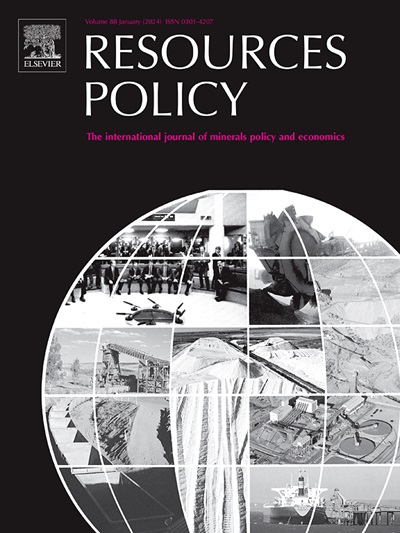Bridging the EPC and IPAT in the presence of natural resources in China: Considering asymmetries in environmental-related technologies and unemployment
IF 10.2
2区 经济学
0 ENVIRONMENTAL STUDIES
引用次数: 0
Abstract
In modern times, one of the most significant difficulties many nations confront is fostering economic development and employment while maintaining environmental sustainability. To accomplish this, this research seeks to empirically analyze the impact of unemployment (UE), innovation in environmental technology (IiT), GDP per capita, and energy consumption per capita on carbon emissions (CO2e) per capita among China's top emitters. A new Environmental PhilipshCurve (EPC) framework is used to adjust for other relevant factors, such as natural resource rent (NR), using data ranging from 1990 to 2020. This is the first research investigating the asymmetric effect (increase/decrease) in UE and IiT. Long-run empirical findings of non-linear N-ARDL show that energy and NR are substantial positive contributors to CO2e. Furthermore, negative shocks (reduction) in UE increase CO2e, while positive shocks (increase) in IiT significantly reduce CO2e. The results were further tested using fully modified and dynamic ordinary least squares techniques to ensure robustness. These empirical findings imply that lowering UE levels via adequate climate change mitigation technology adaption would enhance environmental quality. To combat environmental degradation and unemployment (UE), authorities must emphasize programs connected to innovation in environmental technology and renewable energy development.

在中国自然资源存在的情况下,连接EPC和IPAT:考虑环境相关技术和失业的不对称
在现代,许多国家面临的最重大困难之一是在保持环境可持续性的同时促进经济发展和就业。为了实现这一目标,本研究试图实证分析失业(UE)、环境技术创新(IiT)、人均GDP和人均能源消耗对中国主要排放国人均碳排放量(CO2e)的影响。使用1990年至2020年的数据,使用新的环境PhilipshCurve (EPC)框架来调整其他相关因素,如自然资源租金(NR)。这是第一个调查UE和IiT不对称效应(增加/减少)的研究。非线性N-ARDL的长期实证结果表明,能源和NR是二氧化碳当量的实质性正贡献者。此外,UE的负冲击(减少)增加了CO2e,而IiT的正冲击(增加)显著减少了CO2e。采用完全修正和动态普通最小二乘技术对结果进行进一步测试,以确保鲁棒性。这些实证结果表明,通过适当的气候变化减缓技术适应来降低利用效率水平将提高环境质量。为了应对环境恶化和失业问题,当局必须强调与环境技术创新和可再生能源开发相关的项目。
本文章由计算机程序翻译,如有差异,请以英文原文为准。
求助全文
约1分钟内获得全文
求助全文
来源期刊

Resources Policy
ENVIRONMENTAL STUDIES-
CiteScore
13.40
自引率
23.50%
发文量
602
审稿时长
69 days
期刊介绍:
Resources Policy is an international journal focused on the economics and policy aspects of mineral and fossil fuel extraction, production, and utilization. It targets individuals in academia, government, and industry. The journal seeks original research submissions analyzing public policy, economics, social science, geography, and finance in the fields of mining, non-fuel minerals, energy minerals, fossil fuels, and metals. Mineral economics topics covered include mineral market analysis, price analysis, project evaluation, mining and sustainable development, mineral resource rents, resource curse, mineral wealth and corruption, mineral taxation and regulation, strategic minerals and their supply, and the impact of mineral development on local communities and indigenous populations. The journal specifically excludes papers with agriculture, forestry, or fisheries as their primary focus.
 求助内容:
求助内容: 应助结果提醒方式:
应助结果提醒方式:


